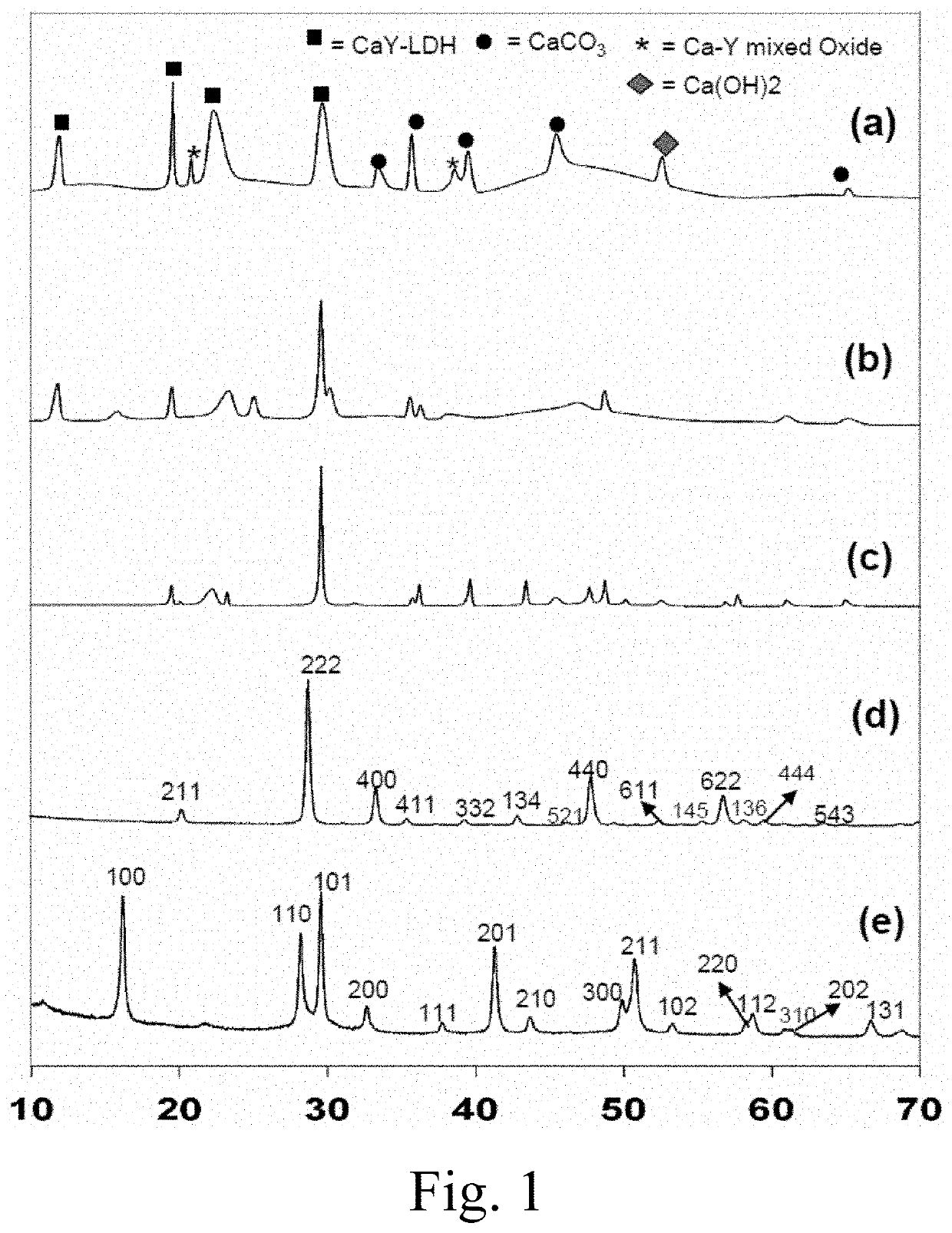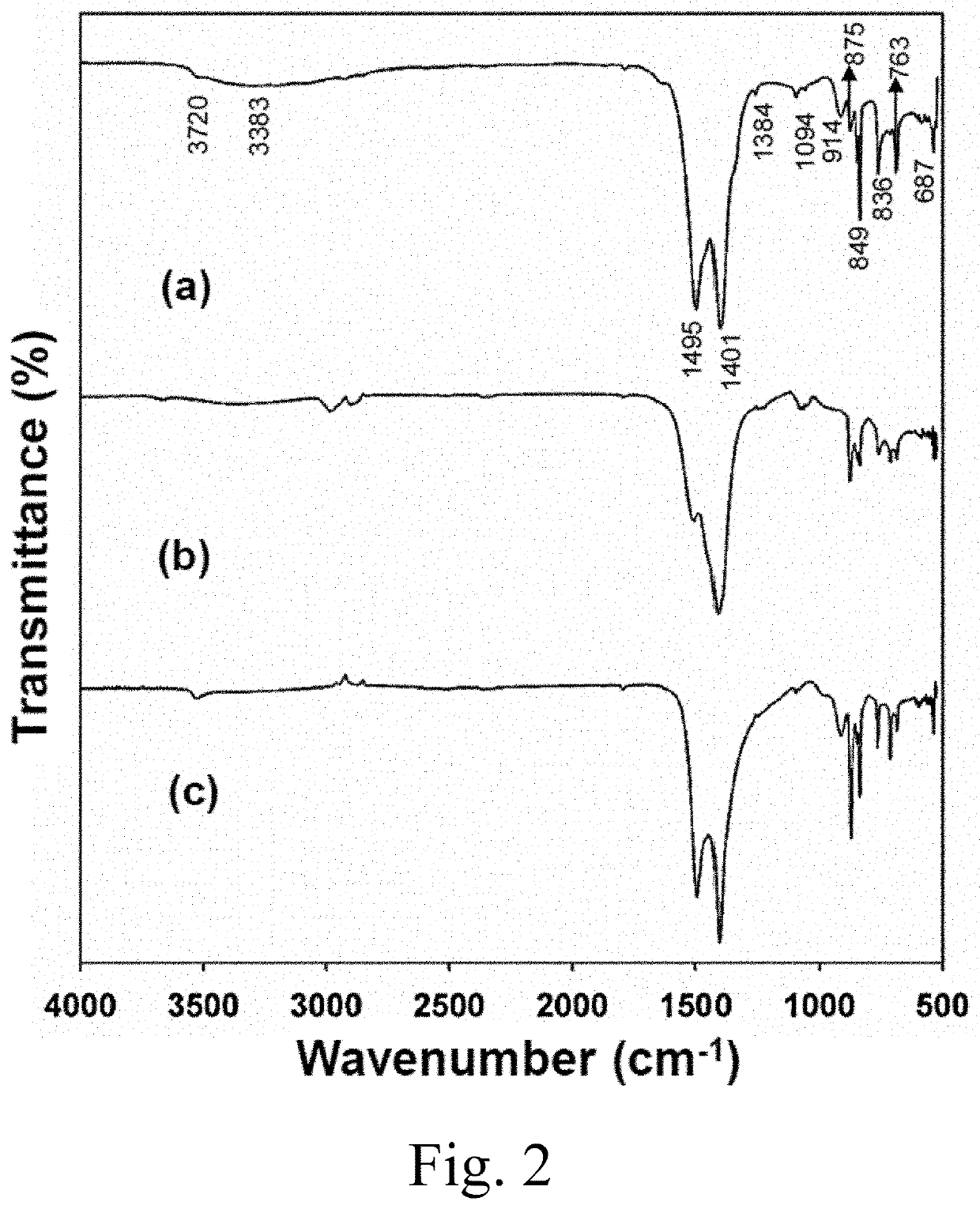Ca-y-carbonate nanosheets, their use, and synthesis
a nano-carbonate and nano-structure technology, applied in the field of nano-structured adsorbents, can solve the problems of no commercially available one-step system and/or absorbent for the simultaneous use, metals down to no more than trace levels, and pollution of water
- Summary
- Abstract
- Description
- Claims
- Application Information
AI Technical Summary
Benefits of technology
Problems solved by technology
Method used
Image
Examples
examples
[0088]Materials Preparation: Appropriate amounts of Y(NO3)2 6H2O (Sigma Aldrich, 99%) and Ca(NO3)3.9H2O (BDH Chemicals) were dissolved in deionized water and the pH was adjusted to 8.5 by adding 15% (NH4)2CO3 (4.1 mol / mL, Merck, 99.99% pure). The precursor suspension was stirred for approximately 2 hours, then poured into a Teflon bottle with an inner volume of 25 mL, supported by a stainless-steel vessel. The stainless-steel vessel was sealed, and each hydrothermal reaction was performed at a temperature of 200° C. for 24 hours using a 500 mL autoclave with a magnetic stirrer (Model TPR-1, Taiatsu Techno). The contents of the vessel were then allowed to cool to room temperature. The final product was collected by filtration, then washed by centrifugation and decantation in deionized water and ethanol (Merck 99.99% pure) to remove undesirable anions. The product was dried in an oven for 24 hours at 120° C.
[0089]Materials Characterization: X-ray diffraction (XRD) patterns were record...
PUM
 Login to View More
Login to View More Abstract
Description
Claims
Application Information
 Login to View More
Login to View More - R&D
- Intellectual Property
- Life Sciences
- Materials
- Tech Scout
- Unparalleled Data Quality
- Higher Quality Content
- 60% Fewer Hallucinations
Browse by: Latest US Patents, China's latest patents, Technical Efficacy Thesaurus, Application Domain, Technology Topic, Popular Technical Reports.
© 2025 PatSnap. All rights reserved.Legal|Privacy policy|Modern Slavery Act Transparency Statement|Sitemap|About US| Contact US: help@patsnap.com



